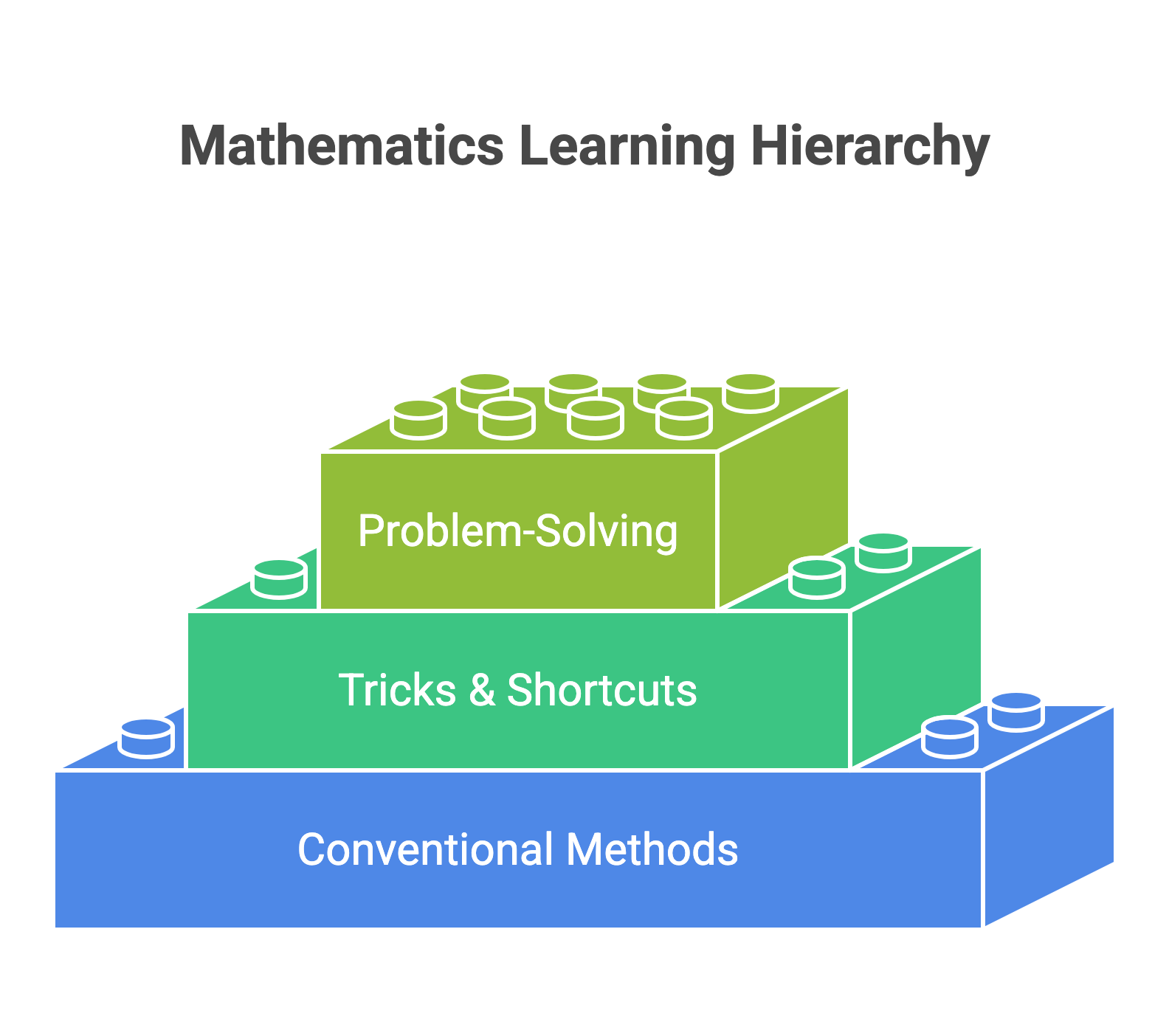Why Conventional Methods Should Come Before Tricks in Mathematics
By someone who's been in classrooms long enough to see it all!
Over the 10+ years of teaching—whether in an engineering college classroom or in online sessions or tutoring scholastic level students — I've seen one recurring pattern in students: a growing obsession with shortcuts and tricks, especially when it comes to mathematics. And while I get the appeal (who doesn't love a quick hack?), I've realized something important: students must first be introduced to the conventional methods of solving problems before jumping to the tricks and shortcuts.
Let me explain why.

The Foundation Matters
Think of mathematics like building a house. The conventional method is the strong foundation. Tricks and shortcuts? They're the fancy interiors. Sure, the interiors make everything look good, but without a solid foundation, the whole thing can collapse. If a student forgets the trick in an exam or it doesn't apply to a slightly tweaked question, they're stuck—unless they know the proper, step-by-step method.
Mental Growth Comes from Doing It the Long Way (At First!)
When a student learns to solve a problem conventionally, they're not just learning that one problem—they're training their brain to think logically, develop patience, and build confidence. These are skills that help not just in math, but in life too. Tricks may give speed, but understanding gives strength.

What I've Seen Firsthand
After teaching for quite some time now—in colleges, online platforms, and in test-prep environments—I've noticed that students who rely only on tricks often panic when they don't remember one. On the other hand, students who've practiced the traditional approach can always fall back on it, calmly work through the problem, and arrive at the answer—even if it takes a little longer.
I've seen it during exams, I've seen it during classroom practice sessions. The ones who understood the "why" behind a concept always performed better than those who just knew the "how".
A Balanced Approach
This doesn't mean we should ignore tricks completely—they're helpful and even necessary for time-bound exams. But only after the concept is well understood. First teach the logic. Then the shortcut. That's the order I swear by.
So if you're a student, a parent, or an educator reading this: don't skip the basics. Tricks are tools, but the real power lies in knowing how to build the tool from scratch when needed.